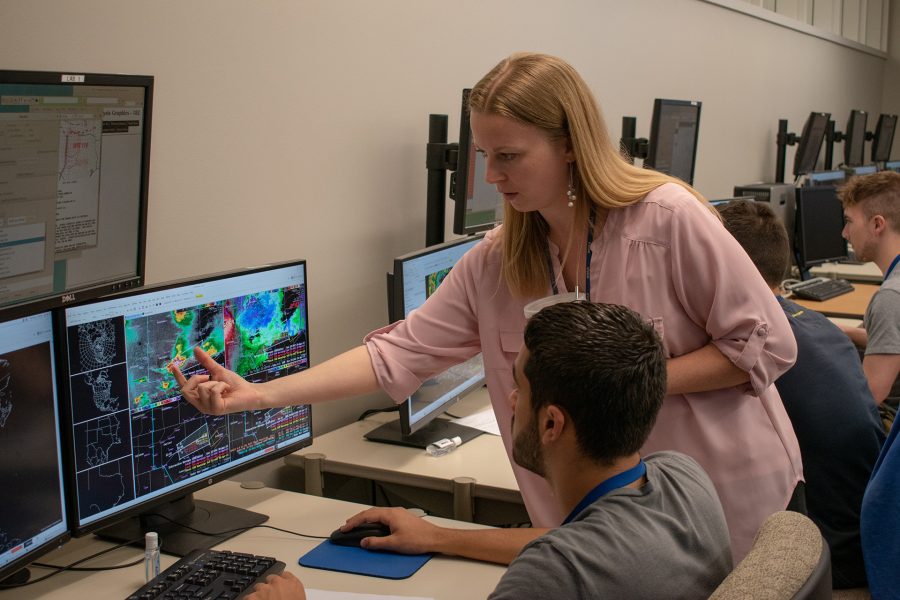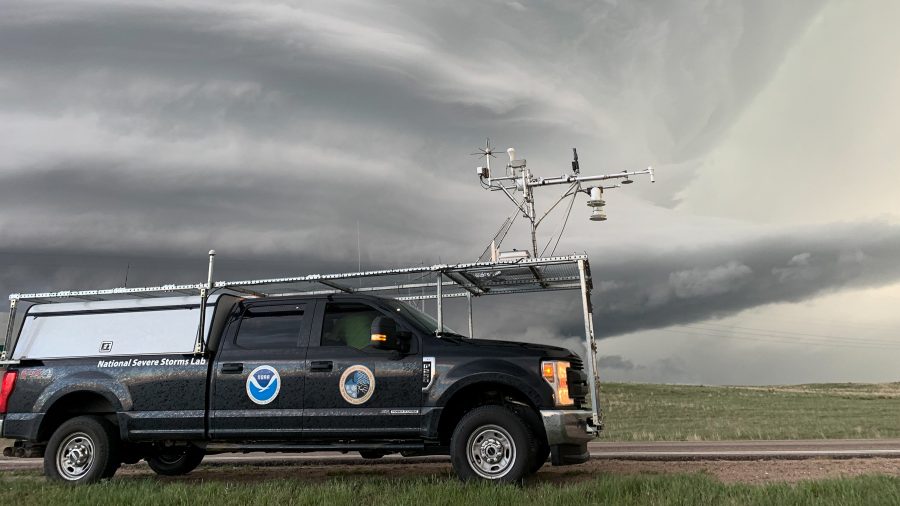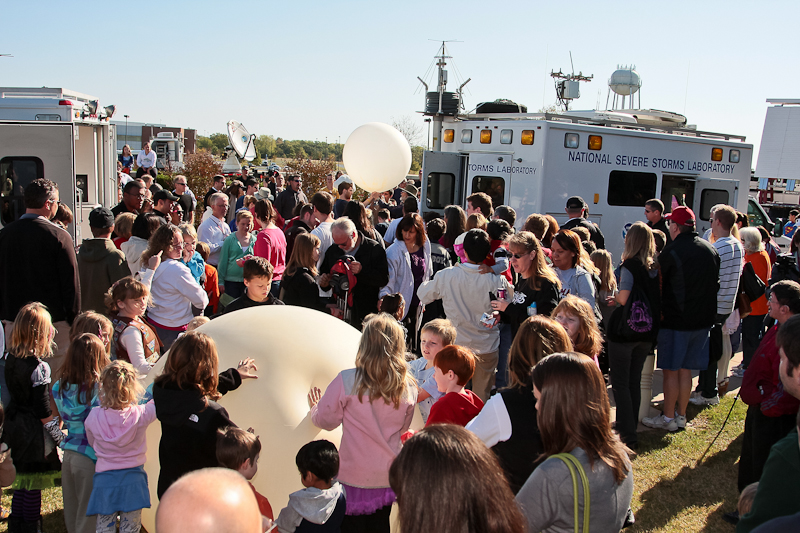Join us online for children’s activities, live sessions, and behind-the-scenes looks at the National Weather Center! Ask research scientists your questions, go behind the scenes with NOAA National Severe Storms Laboratory’s mobile research tools, and much more! Content will be uploaded daily from Monday through Saturday to the National Weather Festival website.
Want the scoop from NOAA and its partners? Here’s the schedule by topic:
Severe Weather Research
Wednesday, Oct. 28, 5-6 p.m. CDT
GoTo Webinar: Get to Know the Scientists: How Different Paths Led to Working at the NOAA National Severe Storms Laboratory
This virtual National Weather Festival live panel highlights the diverse paths of four scientists who work at the NOAA National Severe Storms Laboratory. Each presenter will share their personal story about how they became a scientist. Then they will answer your questions live. Ask them anything about their education, career path, or what they do at NSSL. Submit questions in advance to nssl.outreach@noaa.gov.
Registration is required for this free event
Meet the panel:
- Elizabeth Smith is originally from West Virginia and loved observing the weather at a young age, but she didn’t dream of being a research meteorologist until high school. Today she works for NOAA’s NSSL where she conducts field research collecting and analyzing boundary-layer observations as a research scientist.
- Pat Hyland turned his fear into a career. Scared of severe weather as a child, he now develops and tests tools to assist forecasters during severe weather. Pat is originally from Ohio and works for the Cooperative Institute for Mesoscale Meteorological Studies at the University of Oklahoma. His work supports NOAA’s NSSL.
- Katie Wilson became interested in meteorology at the age of 15. She traveled from England to the University of Oklahoma to study meteorology. There she met a researcher working to understand forecasting technologies as well as the psychology behind decisions. Katie not only loves her job but she loves the people she works with at OU CIMMS and NOAA’s NSSL.
- Jacob Segall’s passion for weather began as a kid during a cross-country road trip when his family encountered a supercell thunderstorm in Ohio. Jacob participates in field research projects to complement his work in radar science. Originally from Pennsylvania, he works for OU CIMMS. His work supports NOAA’s NSSL.
Saturday, Oct. 31, 1 p.m. CDT
Observations on the Go: Up Close with NOAA NSSL Research Tools
Take an up-close look at the mobile instruments our researchers take on the road to measure the atmosphere. Learn about their innovative designs and how they use these tools to safely gather data in storms.
NOAA Affiliates
Tuesday, Oct. 27, 4 p.m. CDT
University of Oklahoma Cooperative Institute for Mesoscale Meteorological Studies Virtual Tour
Take a virtual tour of OU CIMMS and current research happening at the cooperative institute! Our work supports entities with several NOAA entities – from severe weather research to forecaster training. While most CIMMS employees are based in Oklahoma, we also have scientists in Kansas City, Tennessee, and Colorado. Get an inside view of how our research is helping improve forecasting tools to help save lives and property.
Wednesday, Oct. 28, 4 p.m. CDT
Ask us! OU CIMMS Live Panel
Ever wonder how a forecaster handles stress? How does a radar scan the sky? Ask us your weather questions, from radar to research instrumentation to forecaster training, we have answers.
Meet the panelists!
- David Schvartzman connected with OU CIMMS and NOAA National Severe Storms Laboratory while earning his Masters degree in Electrical and Computer Engineering at the OU Advanced Radar Research Center. Today as a researcher at CIMMS supporting NOAA NSSL, his research is focused on advanced radar signal processing techniques, specifically for the Advanced Technology Demonstrator radar. This important research aims to continue to improve the National Weather Service’s radar capabilities while meeting future needs.
- Alyssa Sockol’s interest in meteorology began in the Windy City of Chicago. She enjoys working in a research-focused environment and supporting the DOE Atmospheric Radiation Measurement Data Quality Office combines her weather loves. She helps ensure all of ARM’s weather and climate data are of good quality to provide the most accurate, precise, and reliable data for scientific research. An avid code writer, she also works with students in the ARM DQ Office.
- Hannah Wells has a very specific favorite weather phenomenon: thunder snow! She’s experienced thunder snow several times. Hannah supports the NOAA National Weather Service Warning Decision Training Division training and creating training for forecasters from all over the nation. When she isn’t working, she enjoys competitive ballroom dancing.

Operations and Forecasters
Monday, Oct. 26, 4-5 p.m. CDT
NOAA NWS Forecasters Answer Your Questions about Severe and Hazardous Weather
Forecasters at the NOAA NWS Weather Forecast Office in Norman have teamed up with forecasters from the NOAA NWS Storm Prediction Center to answer your questions about severe and hazardous weather for the 2020 National Weather Festival! Questions were gathered from the public during a two-week period in late September through early October 2020. Listen as we answer your questions, such as how tornadoes form, what’s the strangest event we’ve had to work, and much more!
Tuesday, Oct. 27, 6:30-8:30 p.m. CDT
NOAA NWS Norman Forecast Office presents Basic Spotter Training
As part of the 2020 National Weather Festival, NWS Norman will be conducting a Storm Spotter Training webinar. The class is free and open to anyone interested in learning more about severe storms! Topics include the importance of storm spotters, what a good storm report is during severe weather, safety while storm spotting, and some storm structure basics when you are looking at a storm.
Thursday, Oct. 29, 6:30-8:30 p.m. CDT
NOAA NWS Norman Forecast Office presents Advanced Spotter Training
As part of the 2020 National Weather Festival, NWS Norman will be conducting an Advanced Storm Spotter Training webinar. The class is free and open to anyone interested in learning more about severe storms! The first portion of the course gives a brief refresher on the basics of a good report and storm spotting safety, which is mainly explored in the normal course. The advanced course then dives into the meteorology behind severe storms, as well as discusses storm structure and evolution.
Friday, Oct. 30, 4-5 p.m. CDT
Issue Your Own Warning with the NOAA NWS Warning Decision Training Division
The NOAA National Weather Service Warning Decision Training Division (WDTD) develops and delivers training on the elements of the warning process involving a NWS forecast office and its partners. Our primary goal is to increase expertise among NOAA/NWS personnel and their core partners so they can better serve the public during warning operations. During this activity, WDTD instructors will demonstrate the process of issuing a warning using the same technology NWS forecasters use in operations. There will also be time for a Q&A.
Saturday, Oct. 31, 3-4 p.m. CDT
NOAA NWS Norman Forecast Office Weather Balloon Launch
Weather balloons play an important role in understanding the atmosphere. These balloons help us diagnose short term weather events, as well as provide our weather models with data that is used to improve our forecasts. For the 2020 National Weather Festival, join Jennifer Thompson at the National Weather Service Weather Forecast Office in Norman, Oklahoma, where she walks through the processes of performing a weather balloon launch!



